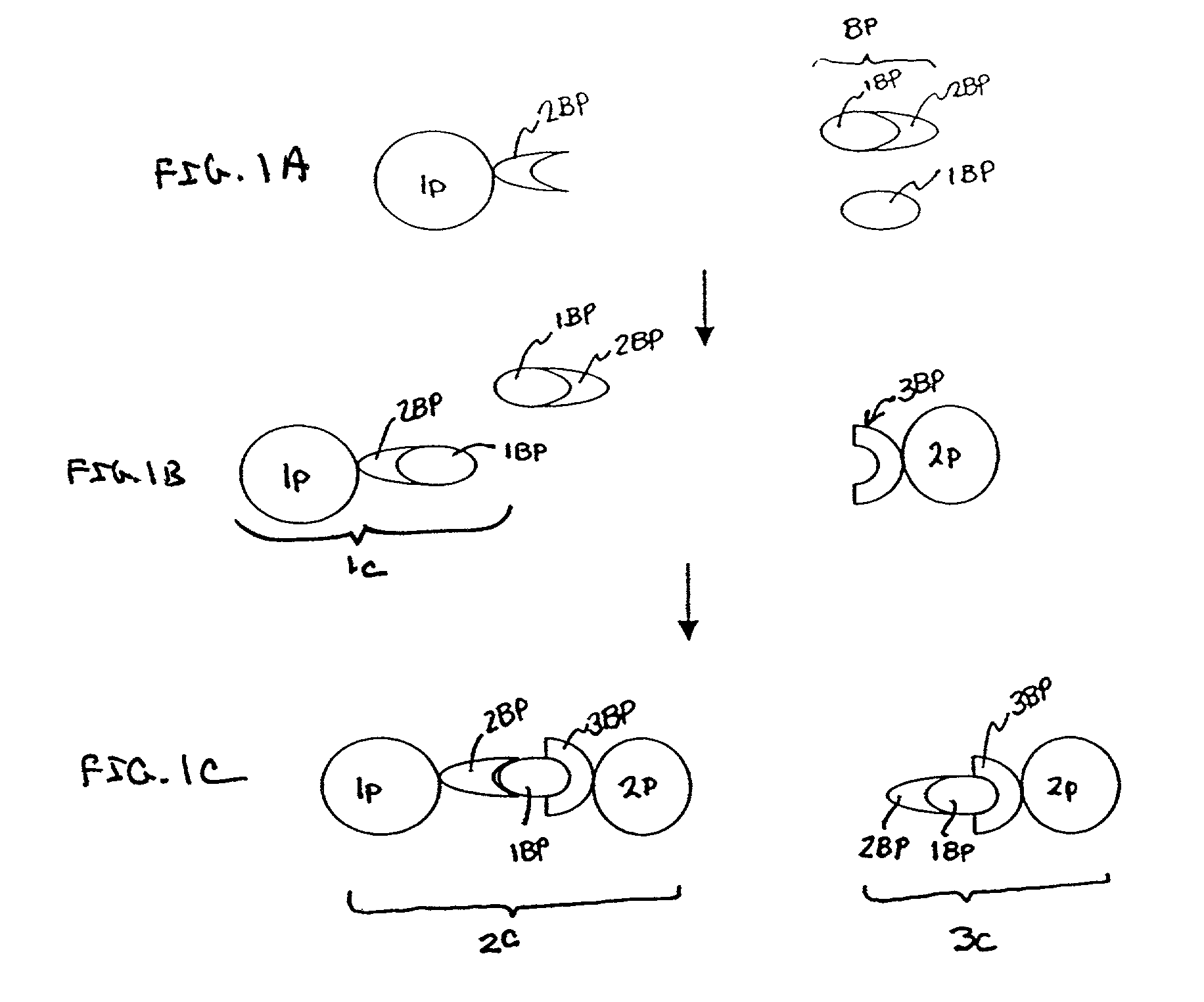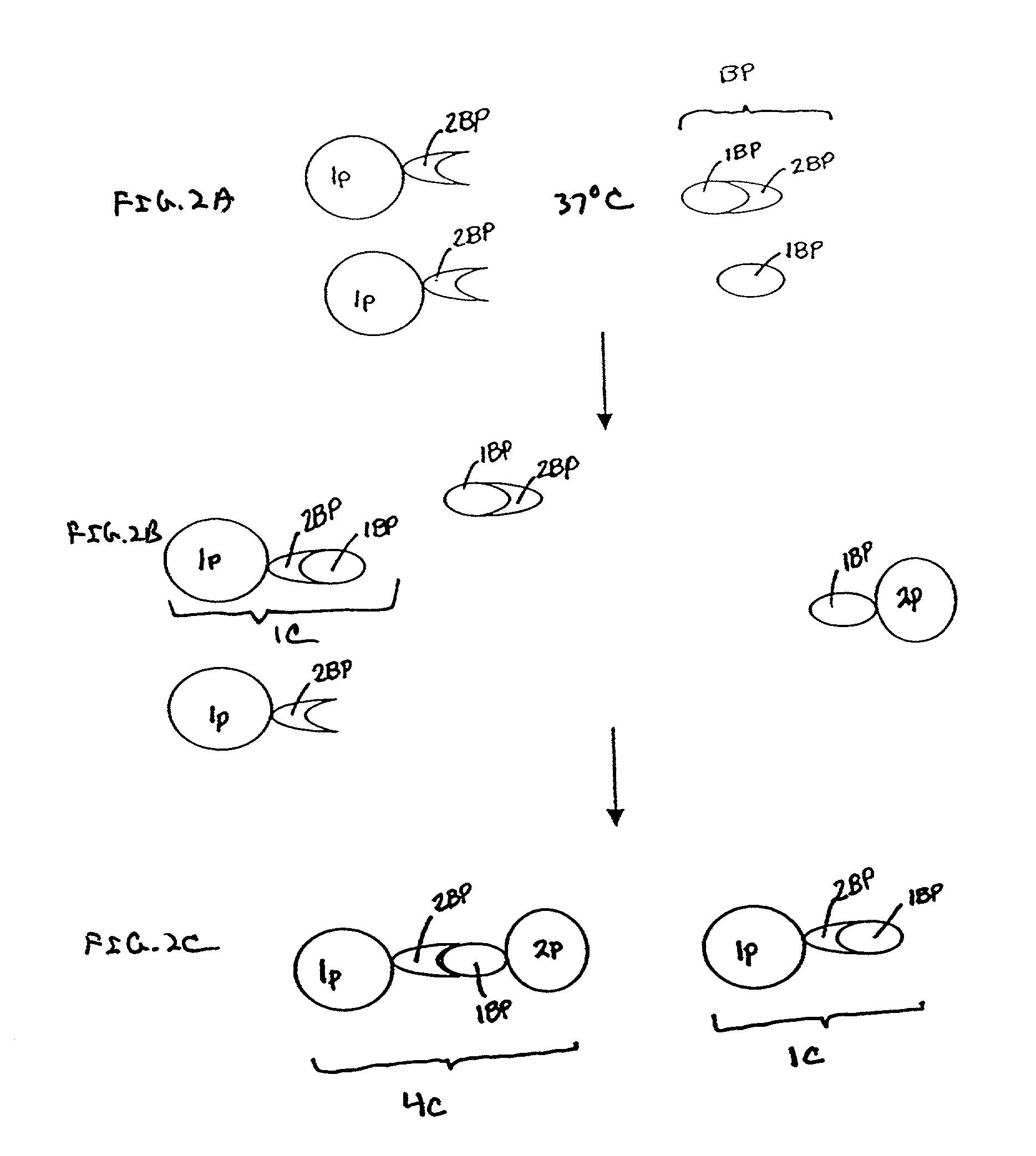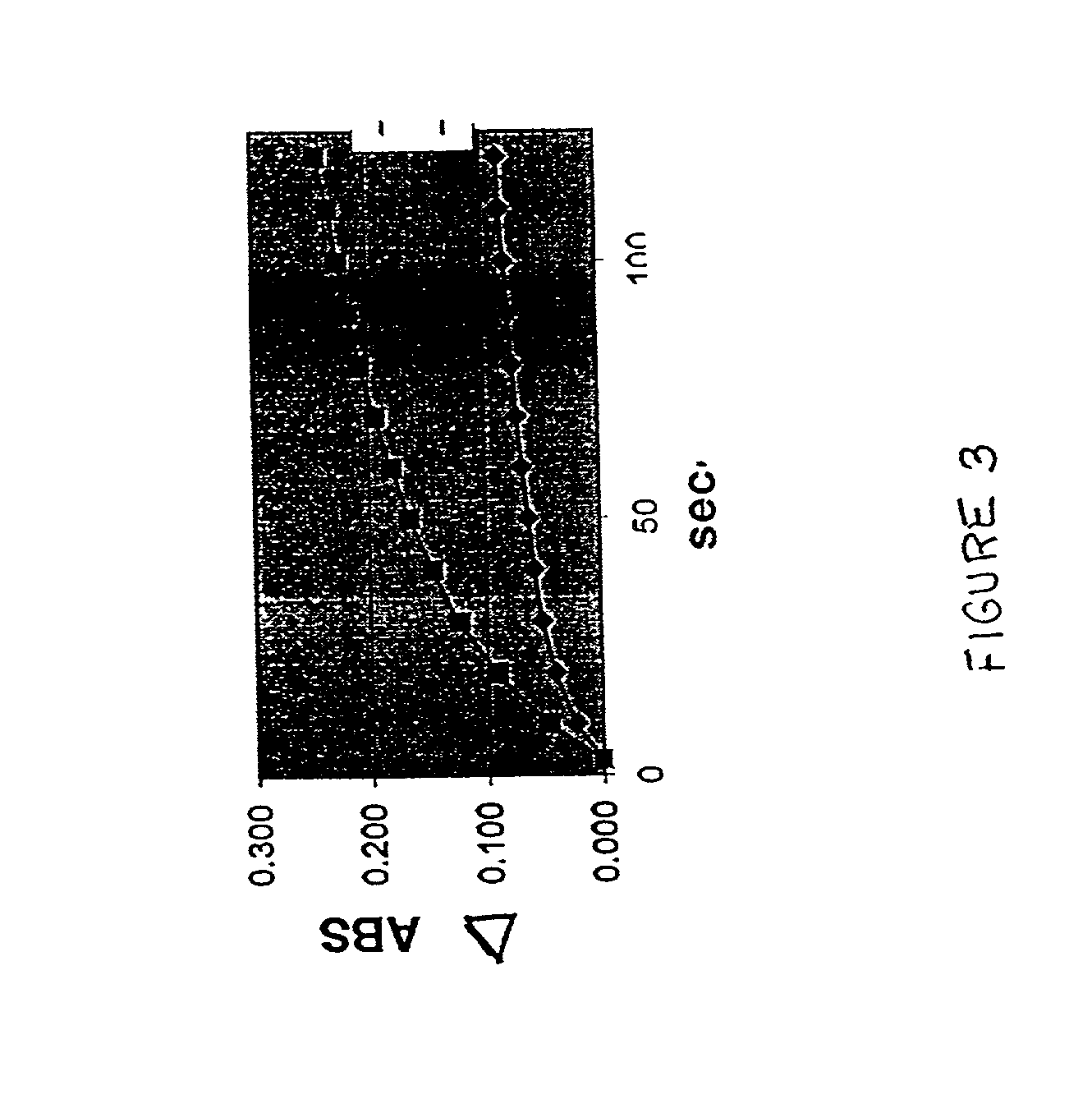Free Analyte detection system
a free analyte and detection system technology, applied in the field of particle-based assays, compositions and kits, can solve the problems of reducing the sensitivity of the assay, hypercoagulation, and inability to distinguish the presence of bound forms, and achieves no radioactivity, low cost, and minimal steps
- Summary
- Abstract
- Description
- Claims
- Application Information
AI Technical Summary
Benefits of technology
Problems solved by technology
Method used
Image
Examples
examples
A. Preparation of Reagents
[0067] i. Preparation of the C4BP-Latex Particles
[0068] In one embodiment of the invention, polystyrene latex particles (Estapor.RTM.) having a diameter of about 100 nm are sensitized by passive adsorption with purified C4BP at a ratio of 1.5-2.5 mg of C4BP per m2 of latex surface. Sensitization is performed by incubation in a borax buffered media at pH 8.2 (ionic strength between 0.05-0.2) at room temperature. Incubation times are optimized to maximize adsorption, and can range from about 2 to about 18 hours. In one embodiment, C4BP-latex particles are subsequently absorbed with bovine serum albumin under saturation conditions (e.g., at a ratio of 2 mg of BSA per mg of latex particles) to completely cover the surface of the particle. Incubation of C4BP-sensitized latex particles with BSA is performed by incubation at room temperature for an additional 2-18 hours.
[0069] C4BP-sensitized latex is then diluted in a reaction buffer containing 2 mM CaCl2 to obta...
PUM
 Login to View More
Login to View More Abstract
Description
Claims
Application Information
 Login to View More
Login to View More - R&D
- Intellectual Property
- Life Sciences
- Materials
- Tech Scout
- Unparalleled Data Quality
- Higher Quality Content
- 60% Fewer Hallucinations
Browse by: Latest US Patents, China's latest patents, Technical Efficacy Thesaurus, Application Domain, Technology Topic, Popular Technical Reports.
© 2025 PatSnap. All rights reserved.Legal|Privacy policy|Modern Slavery Act Transparency Statement|Sitemap|About US| Contact US: help@patsnap.com



